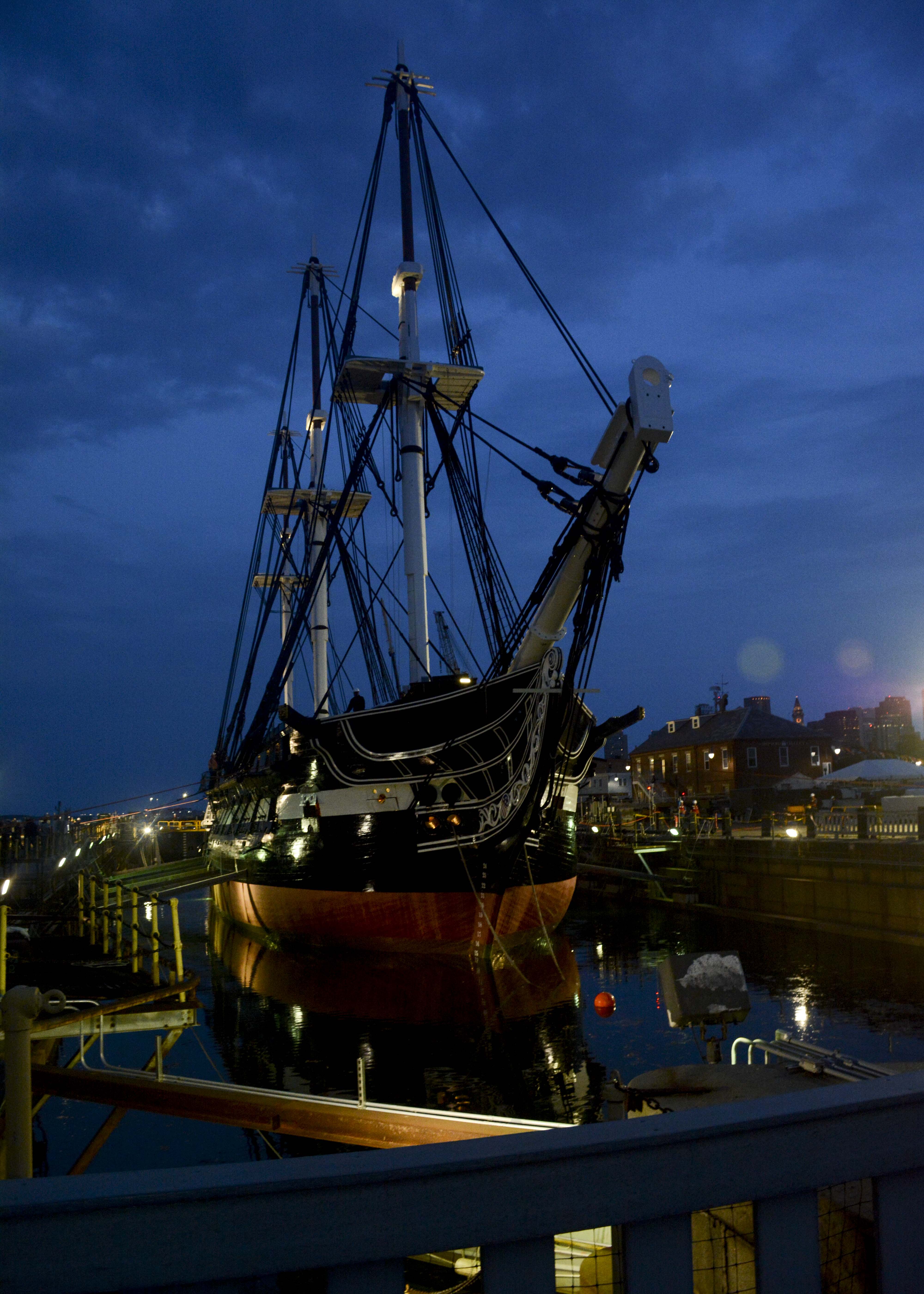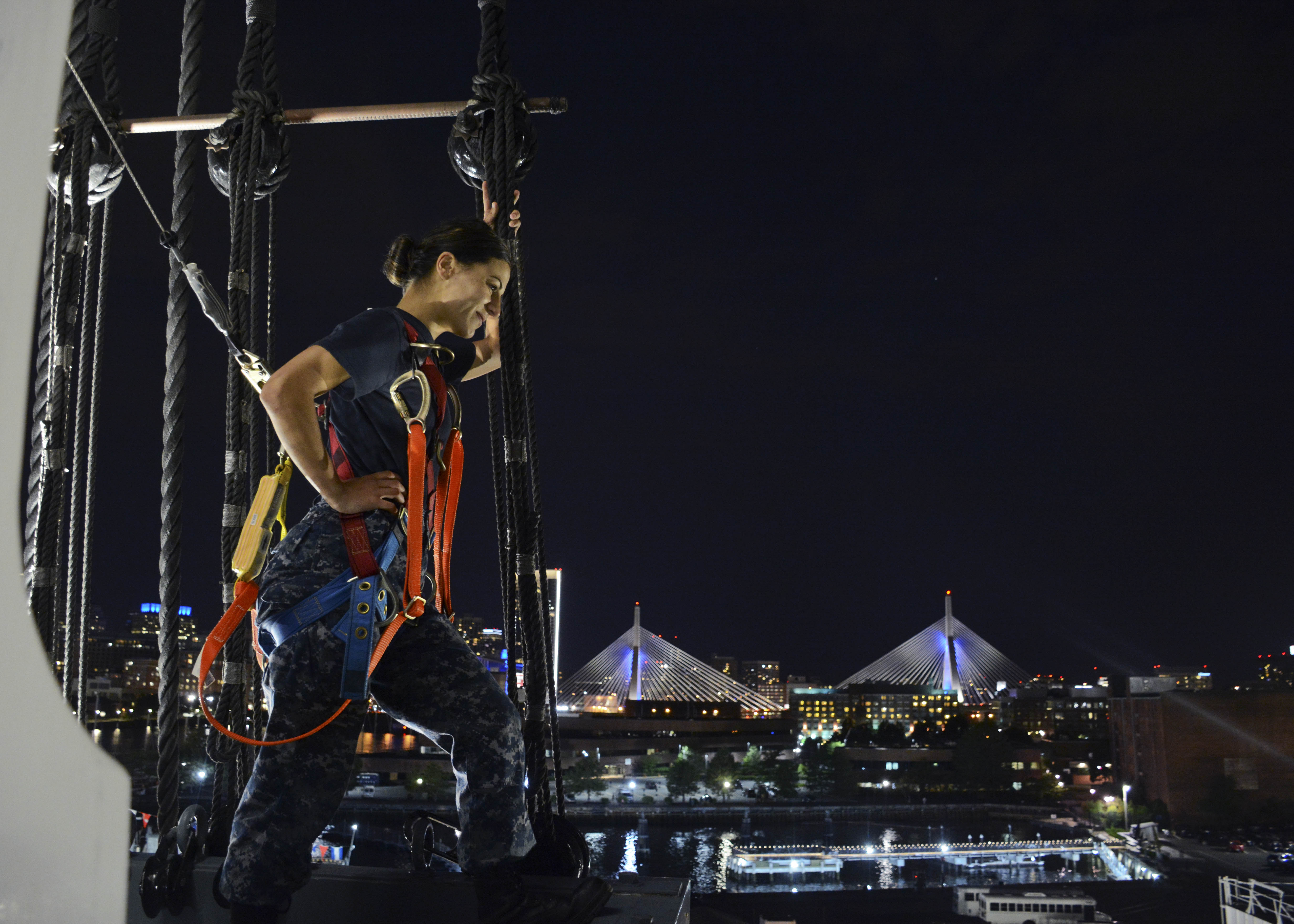
This post has been updated with additional information from the Naval History and Heritage Command.
Today, perhaps 15 percent of USS Constitution – including the keel – is original material from the 1790s, but the spirit of the world’s oldest commissioned warship afloat remains intact as a 26-month restoration winds down.
Late on Sunday, Constitution left Dry Dock 1 at Charlestown Navy Yard, Mass. returning to a location familiar with scores of tourists, the nearby Pier 1. Post-docking restoration work will continue, and the ship is expected to reopen to the public in early September.
“When she was built, Constitution was among the best-designed ships in the world,” said a statement released by retired Rear Adm. Sam Cox, Naval History and Heritage Command Director.
“She could outrun anything she couldn’t outgun and outgun anything she couldn’t outrun.”
USS Constitution By the Numbers
26 months in dry-dock.
100 hull planks were cut from white oak trees. After hours of steaming these planks, restoration workers had approximately 3 minutes to bend the wood into the right shape to fit Constitution’s hull.
150
white oak trees designated by the Navy for use in the restoration.
468 four-inch copper pins were fashioned to hold bronze protective castings to the forward edge of the cutwater on the bow.
2,200 new copper sheets replaced old copper sheets on the hull.
Constitution was one of six original frigates Congress authorized to be built in 1794, and launched on October 21, 1797. Shipbuilder Joshua Humphreys designed the six frigates as the backbone of the new American Navy to be larger and more heavily armed than earlier frigates.
In a recent blog post Constitution’s commanding officer, Cmdr. Robert S. Gerosa, Jr. reflected on how the growing pains experienced when new platforms are launched today echo many of the concerns 220 years ago when Constitution entered service.
“It was a new design with exotic parts sourced from distant locales and multiple builders for two designs,” wrote Gerosa. “The future success these ships would have was in no way represented by the pains of the building process.”

For the restoration, a blacksmith fashioned 468 copper pins to hold bronze protective castings to the forward edge of Constitution’s cutwater on the bow. Planks cut from white oak trees were steamed in order to be bent just right to fit the ship’s bow. The Navy designated 150 white oaks for future restoration of the ship in the 1970s and 24 were used during the current maintenance period. To protect against wood boring shipworms, 2,200 new copper sheets were nailed to the hull. Copper sheathing has covered the lower hull since 1797.
When Constitution launched, Gerosa wrote, the frigate was immediately pressed into service fighting against the French and protecting merchant ships in home waters. But the ship’s defining moment occurred a decade and a half after launch, in action against the British frigate HMS Guerriere.

Constitution’s sailors noticed some of the enemy’s cannon shot appeared to fall harmlessly off the 22-inch hull. Gerosa wrote the ship’s nickname, “Old Ironsides” was coined when a sailor reportedly shouted, “Huzza! Her sides are made of iron!”
“The ship itself didn’t end up proving its true superiority until the war of 1812 when she was 15 years old,” Gerosa wrote. At this time, Gerosa added, the British front-line ships were newer. “Her unorthodox design proved ahead of her time in defeating not one but four British warships in three separate engagements.”





